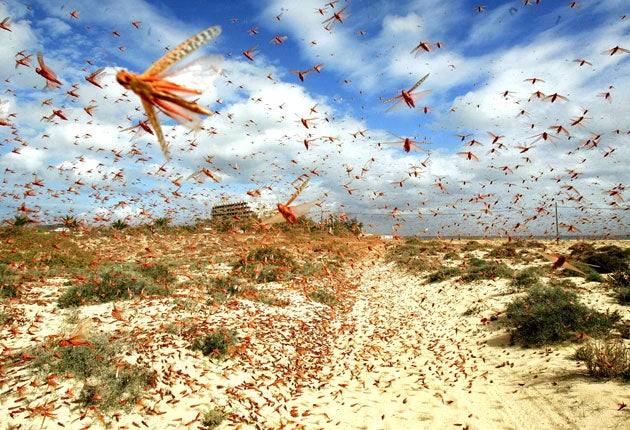Scientists seek inspiration from locusts in attempt to reduce car crashes
Insect has a fast and accurate warning system which enables it to detect approaching objects and avoid them

Scientists hoping to help prevent car crashes have created a computer system which they say was inspired by a swarm of locusts.
The scientists, from the universities of Lincoln and Newcastle, have discovered that the inspiring-insect has a fast and accurate warning system which enables it to detect approaching objects and avoid them while in flight.
Based on these findings, the team behind the findings have created a computer system which they believe could become an early prototype for a technology that could prevent collisions
Professor Shigang Yue, from the University of Lincoln's school of computer science, said: “We were inspired by the way the locusts' visual system works when interacting with the outside world and the potential to simulate such complex systems in software and hardware for various applications.
“We created a system inspired by the locusts' motion sensitive interneuron - the lobula giant movement detector.
“This system was then used in a robot to enable it to explore paths or interact with objects, effectively using visual input only.”
Prof Yue added that building a working system was a major research challenge.
She continued: “Vision plays a critical role in the interaction of most animal species and even relatively low-order animals have remarkable visual processing capabilities.
“For example, insects can respond to approaching predators with remarkable speed.
“This research demonstrates that modelling biologically plausible, artificial visual neural systems can provide new solutions for computer vision in dynamic environments.
“For example, it could be used to enable vehicles to understand what is happening on the road ahead and take swifter action.”
The research was carried out as part of a collaborative project with the University of Hamburg in Germany and Tsinhua University and Xi'an Jiaotong University in China.
Dr Claire Rind, from Newcastle University's institute for neuroscience, said: “Developing robot neural network programmes, based on the locust brain, has allowed us to create a programme allowing a mobile robot to detect approaching objects and avoid them.
“It's not the conventional approach as it avoids using a radar or infrared detectors, which require very heavy-duty computer processing.
“Instead, it is modelled on the locust's eyes and neurones as the basis of a collision avoidance system.”
Dr Rind added: “While some collision-avoidance features are pricey options on luxury cars, their performance is not always as good as it could be - and they come at a high cost.
“This research offers us important insights into how we can develop a system for the car which could improve performance to such a level that we could take out the element of human error.”
Subscribe to Independent Premium to bookmark this article
Want to bookmark your favourite articles and stories to read or reference later? Start your Independent Premium subscription today.

Join our commenting forum
Join thought-provoking conversations, follow other Independent readers and see their replies